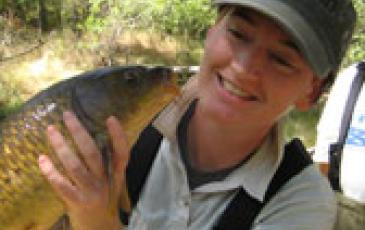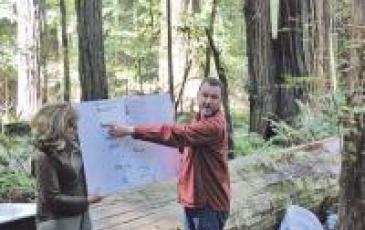CNR's graduate programs ranked among the best in the nation by National Research Council study
President Obama Announces More Key Administration Posts
On September 17, 2010, President Barack Obama announced his intent to appoint several individuals as Members of the President's Committee on the National Medal of Science of which CNR Professor Inez Fung has a designated place.
The Philomathia Symposium at Berkeley
Sponsored by the Philomathia Foundation and hosted by the University of California, Berkeley, the event, which is free upon registration, will be held at the Berkeley Repertory Theatre in downtown Berkeley and will feature presentations on cutting-edge developments in four key energy-related areas: supply, demand, policy and environment.
CNR Student Co-manages Recycling Program
The Exchange is the virtual face of the campus's ReUSE program, which hosts material-exchange stations in academic buildings and residential halls that student-volunteers keep stocked with office supplies and other materials.
California's climate change policy is topic of conference
A conference sponsored by the University of California Giannini Foundation and UC Agricultural Issues Center will pick apart California’s climate change policies as expressed in a state law called AB 32 scheduled for Oct. 4 at the California Museum, 1020 O Street, in Sacramento.
Every year one million acres of farmland are lost to development
Film The Last Crop tells a personal tale of a family caught in the middle of a delicate interplay between urban and agricultural space in California’s Central Valley. The evening will consist of a 20 minute screening of the film followed by a panel discussion.
PMB Scientist receive corn biofuel grant
Two UC Berkeley scientists have been awarded a 3-year grant to study how to develop strains of corn that use the leaves and stems of the plant in biofuel production.
Billionaire funding climate change study on trees
Photo by: Christopher Schroeer-Heiermann
Listening to Earth breathe through 500 towers
Photo by: Dennis Baldocchi
Unusual Suspects: Resurgence, resilience and regeneration in the face of Climate Change
Join us in a conversation with community leaders about the experiences of their communities, as they propose and implement novel climate change interventions
Greening the Greeks at UC Berkeley
A frat house recycling program instituted earlier this semester by a pair of ambitious sorority sisters has put a dent in the load of cans, bottles, and cardboard that Cal's fraternities send to the dump every week.
Professor Receives Prestigious Young Investigator Award
Stephanie M. Carlson, assistant professor of environmental science, policy, and management, is among this year’s recipients of the American Society of Naturalists’ Young Investigator Award
Will a 30-Percent Incentive on Fruits and Vegetables Lead to Healthier Eating?
Source: Abt Associates
Worldwide slowdown in plant carbon uptake
Deep and extended droughts are responsible for a recent slowdown in the amount of carbon dioxide that land plants pulled from the atmosphere as they grew, a new study suggests.
We can farm on Mars!
If we ever decide to colonize Mars, it might be fairly simple to grow crops in that red soil, according to a new study. Mars’ reduced gravity could let us use less water and fertilizer than we do on Earth.
Dirt! The Movie
Pedology is the study of soils, and that's what Ronald Amundson teaches as a soil-science professor and the chair of UC Berkeley's Division of Ecosystem Sciences.
In Memoriam of Dr. Arnold Zellner
Dr. Arnold Zellner, ARE adjunct professor, passed away on Tuesday August 10, 2010 at the age of 83. He was one of the great thinkers of our times, a wonderful person, and a major contributor to the ARE department.
Secrets of the redwoods: HSU, UCB scientists work to unlock mysteries
The research project is called the Redwoods and Climate Change Initiative, but the information gathered will help scientists determine much more than how climate change will affect trees. The team said forests are also being affected by invasive species, urbanization and pollution.
GM Plants Escape Into American Wild
Genetically modified canola plants have been found growing wild in the U.S., in some cases far from fields of cultivated genetically modified canola. Results suggest that the plants are reproducing on their own, making this the first report of an established population of GM organisms in the wild in the U.S., according to the team.




















